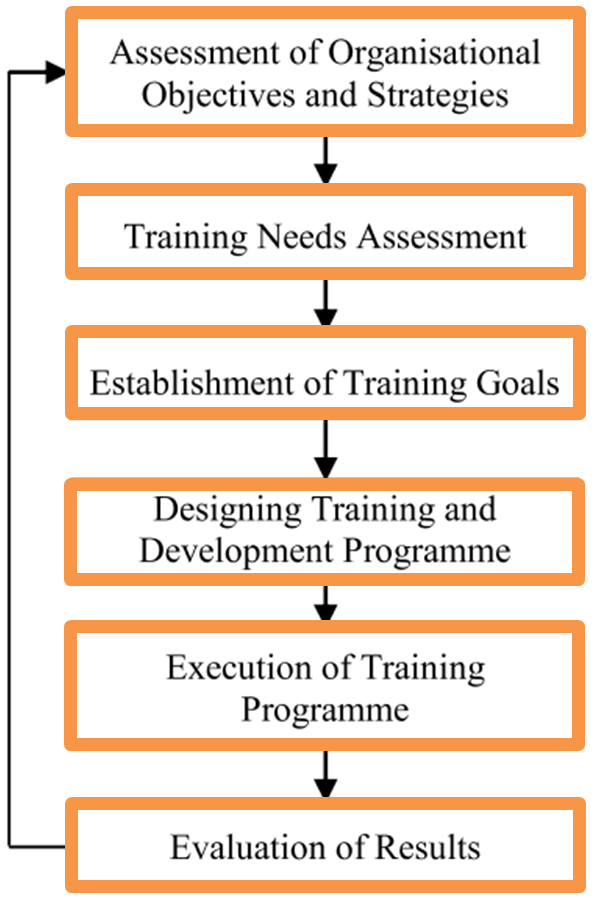There are various steps in the training process that should be followed systematically, so that the training can become successful. These steps are shown in Figure 1.

Fig. 1: Training Process
Assessment of Organisational Objectives and Strategies: Before starting training process, it is important to assess the objectives and strategies Of the organisation. Organisations should be clear about their business goals, strategies, and their vision. Unless and until all these things are clear, the organisation will not be able to assess the potential and weakness of its workforce.
Training Needs Assessment: Many organisations spend a lot of money on various training and development courses. But such a huge investment on these processes is useless until the management is aware about the needs Of these training programmes. Therefore, training needs should be identified to help the employees to deal with present as well as future challenges of the company.
Establishment of Training Goals: The goals of training programme play a significant role as without them any training programme cannot be constructed and the effectiveness of that programme cannot be measured. Thus, after assessing the needs Of the training, it is necessary to establish apparent and assessable training purpose that can be understood easily by the employees. Though the attitude of any individual is unpredictable but still setting up a certain standard can help the organisation to achieve the expected results.
Designing Training and Development Programme: Once the goals for the training series are established, the process of training design Starts. It is the basis for a successful training and development programme. For this, most experienced and specialised instructors are hired who search for the most appropriate content that may be required within the programme. It includes a brief introduction about the entire programme and then the details are given such as what is the need for this training, how this training can prove to be beneficial for them, what impact this training is going to have on their skill improvement, etc.
Execution of Training Programme: After designing of instructional programme, it is the time for the execution Of this programme. To carry-out training process, firstly an Organisation has to search for a common place where the trainees can be called, and then the other arrangements are done such as timings, space, etc. Final y the programme is conducted under the guidance of expert and the progress of trainees is observed by the supervisors. The trainers engaged for this programme should have perfect knowledge about the company’s history, its objectives, and its working environment. He should also have good communication and creative skills. But implementation of any training programme is not an easy task and thus brings certain problems with it, Sometimes, the problems are related to the managers as they do not want to waste their effofls in such training programmes and hence it becomes really difficult to find appropriate instructors.
Evaluation of Results: Since an organisation invests a lot of money on training and development process; their results have a great impact on the productivity Of the organisation, therefore, evaluation Of training is necessary. Evaluation results mainly ensure whether the training process has proved to be useful to the employees as well as to the organisation or not. Though, there are large numbers of organisations who take this process very leniently, but if the assessment is done systematically it enhances the performance of the employees as well the organisation.